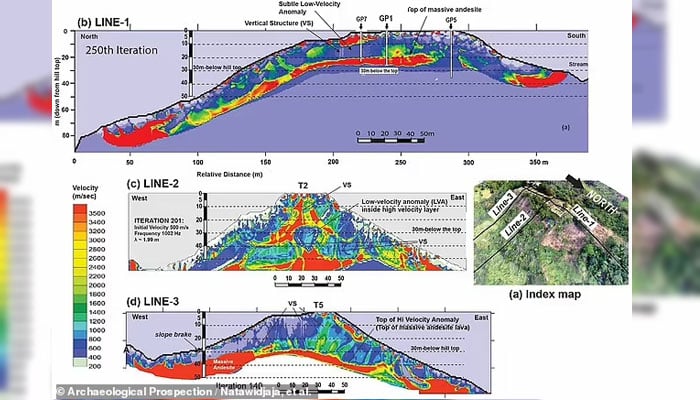Indonesia’s Gunung Padang turns out to be ‘world’s oldest’ pyramid

[ad_1]

A recent archaeological discovery has unveiled what could be the world’s oldest pyramid — three times older than Stonehenge and the pyramids of Egypt — challenging conventional wisdom about the capabilities of ancient civilisations, Daily Mail reported.
Gunung Padang, a 98-foot-deep megalith located within a hill of lava rock in Indonesia, has been re-dated using radiocarbon techniques, revealing its astonishing age.
Originally re-discovered by Dutch explorers in 1890, Gunung Padang is now considered not only the world’s oldest pyramid but also the oldest known man-made construction of its size.

The latest radiocarbon dating places its initial construction over 16,000 years ago, during the last Ice Age, making it over 10,000 years older than the great pyramids of Giza in Egypt and even older than England’s Stonehenge.
What’s particularly intriguing is that the builders of Gunung Padang worked with the local conditions, a testament to their engineering abilities. The pyramid’s first and deepest layer was carved from the site’s natural wealth of cooled lava flows, demonstrating their ability to adapt to their surroundings.

This discovery could challenge preconceived notions about the engineering capabilities of ancient societies. It shows that early civilisations, typically considered hunter-gatherer cultures, possessed impressive masonry skills.
The construction of Gunung Padang unfolded across millennia and in complex stages, with different layers and units dating back to various periods.
Using ground-penetrating radar, core drilling, and trench excavation techniques, geologists and archaeologists probed the site, revealing meticulously sculpted and massive lava-stone structures.

The innermost chamber, known as Unit 4, originated as a natural lava hill but was later sculpted and enveloped architecturally during the last glacial period, between 16,000 and 27,000 years ago.
The radiocarbon dating technique utilised carbon-14 to measure the age of the site, relying on the radioactive decay of carbon atoms found in organic material. The careful selection of untainted organic soil samples ensured the accuracy of the dating.
Gunung Padang’s construction occurred in stages across different eras, with periods of abandonment and modification. The builders of these layers demonstrated impressive masonry capabilities, suggesting the site’s significance in ancient times.
This discovery may reshape our understanding of ancient civilisations and their ability to undertake monumental construction projects, challenging the notion that such feats were beyond the capabilities of early societies.
Gunung Padang stands as a testament to the ingenuity and skills of ancient builders, offering a glimpse into the distant past of human engineering achievements.
[ad_2]